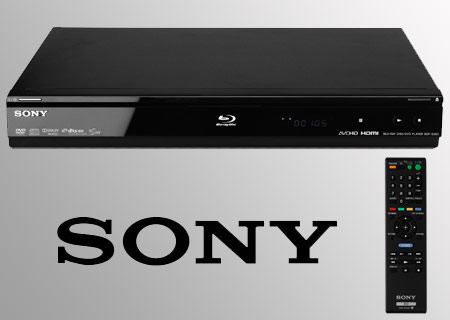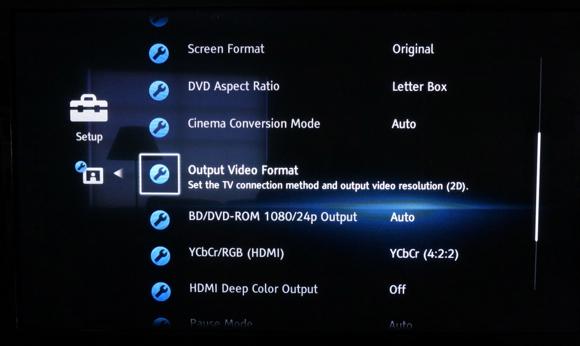Configuring a Blu-ray player is a much harder task than you would think it should be. The menus are filled with different video and audio options, with very little mentioned in the owner’s manual about them. Most players now have guided setups when you first install them, but they either don’t explain most of these features, or don’t even cover them.

Making things worse, many manuals explain the options in ways that don’t help, like “Option X: Turns Option X on and off”. To go over how to correctly set these up, I’m going to reference a Sony BDP-S570 Blu-ray player and its menu options and how they should be configured. Most players will have the same options, though possibly slightly different names. Learn all the settings after the break.
TV Type: 16:9. Unless you’re running this on an SDTV it should be 16:9.
Screen Format: Original. Fixed aspect ratio will stretch 4:3 content to fill your HDTV. You can change it if you’d like, but everyone will look fat.
DVD Aspect Ratio: Letter Box. Otherwise it will crop the sides of the image if you happen to use an SDTV still.
Cinema Conversion Mode: Auto. This mode detects if you’re watching a film or video that happens to interlaced and deinterlaces it. Typically only concerts and some TV shows are interlaced on Blu-ray, but leave it on Auto.
Output Video Format: Auto. This will detect the resolution of your TV and set the Blu-ray resolution accordingly. Some have an option called “Original Resolution” or “Source Direct”, which outputs the content at the original resolution and not the ideal resolution for your TV. Unless you own an expensive video processor, don’t do this as your Blu-ray player probably has better video processing than your TV or receiver.

24p Output: Auto. If your display supports 24p content, which most do now, it will send that out to it, as films are 24p. If it doesn’t support it, it will default back to 60p or 60i.
YCbCr/RGB/ColorSpace: 4:2:2 or Auto. Colorspace is a very confusing thing that thousands of words can be written on. Basically, all Blu-ray content is stored as YCbCr 4:2:0, but HDMI can’t use that format, so it has to be converted to YCbCr 4:2:2, 4:4:4 or RGB first by the player. Usually a player can do this without issue.
If you don’t know, 4:2:2 or Auto is the best choice. If you want to know for certain, you now can purchase the Spears & Munsil HD Benchmark and Calibration Disc 2nd Edition($29.97), which has special test patterns to help you determine the correct choice. Likely they all will look identical, but some displays or Blu-ray players really work best with one. Some TVs and other components, like receivers, will do extra conversions on the signal from your Blu-ray player that make a choice besides 4:2:2 correct, but without test patterns like those on Spears and Munsil, it is really impossible to determine this.
HDMI Deep Color Output: Off. This is a more controversial setting, but no Blu-ray content uses Deep Color, and most displays aren’t designed to properly use it, or can’t display it, so shutting it off avoids possible problems, and under the current standard it has no benefit.
Audio (HDMI): Auto. Older receivers can’t process bitstreams and need PCM, but they will tell the Blu-ray player this, so Auto is the way to go.
Picture Mode: Normal/Standard. This called many different things on players, and is often separate from the other controls. Many times you can only access this with the options pop-up while watching a film, and not in the normal setup menus. Modes like Movie, Drama, Sports and so on lead to incorrect images from your player, and those adjustments should be made in the TV instead. Only the Normal/Standard mode will let your Blu-ray player produce a correct image.
Advanced Chroma: Off. This is a Panasonic setting, and while it fixes one problem, it introduces a larger one, and should remain off.
3D Output Setting: Auto. The player will detect 3D on your TV, use it, as running 3D on a 2D TV will often cause a blank image.
TV Screen Size Setting for 3D: Varies. Enter your screen size and some content will have automatically adjust the 3D depth.
This should cover the common settings in a Blu-ray player menu system, and how they impact a picture as well as the ideal settings. Most players have an automated setup that will do most of these, but it is always a good idea to check again and make sure that it configured them correctly for your system.
Original source:
http://hdguru.com/how-to-properly-configure-a-blu-ray-player/